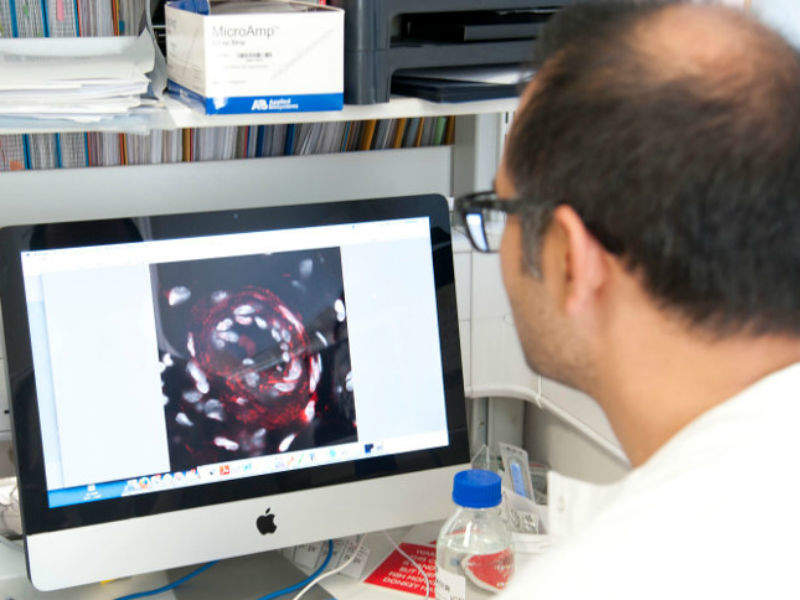
A virtual computerised cell model is being used to predict the success of a new cancer treatment technology which uses targeted sound waves to heat and destroy tumours.
Researchers at the Institute of Cancer Research (ICR) in London created the virtual cells to test the effectiveness of high-intensity focused ultrasound (HIFU) combined with radiotherapy. They are currently testing the technology in preparation for human trials.
Team leader in therapeutic ultrasound at ICR Professor Gail ter Haar has been developing HIFU. The treatment is non-invasive and is able to deliver precise targeted treatment so does not affect the healthy tissue surrounding tumours.
The researchers are trialling the combination of HIFU with radiotherapy because heating cancer cells increases their sensitivity to radiation and therefore the techniques could complement each other.
Ter Harr said: “Heating cancer cells using HIFU, which we’ve developed as a potential future treatment at the ICR, might boost the effects of radiotherapy in treatment for patients.
“This study shows that a new ‘virtual’ tumour that we developed can accurately mimic the response of cancer cells to heat treatment and radiotherapy, simulating how the two treatments work experimentally.
How well do you really know your competitors?
Access the most comprehensive Company Profiles on the market, powered by GlobalData. Save hours of research. Gain competitive edge.

Thank you!
Your download email will arrive shortly
Not ready to buy yet? Download a free sample
We are confident about the unique quality of our Company Profiles. However, we want you to make the most beneficial decision for your business, so we offer a free sample that you can download by submitting the below form
By GlobalData“The model is also an important step for studying future applications of treatments such as high intensity focused ultrasound with radiotherapy, and could ultimately lead to more effective decisions around treatment options for patients.”
The virtual cells can model the response of tumours to heat therapy when used separately or in combination with radiotherapy. The research team compared the model’s predictions with experimental data that was gathered from treating colorectal cancer cells with a radiotherapy-heat combination. They found a close association between the predicted outcomes and the effects on the targeted cells.
The model was developed in collaboration with the ICR Joint Department of Physics and the Royal Marsden NHS Foundation Trust. It will now play an integral role in ter Haar’s future research as she aims to refine methods for measuring and calibrating this new technology.
The researchers predict that more fully-developed computerised tumour simulations could predict whether or not a patient might benefit from the combined radiotherapy and HIFU treatment in the future.
Their latest study is being funded by Cancer Research UK and the Focused Ultra Sound Foundation and has been published in the Journal of the Royal Society Interface.







